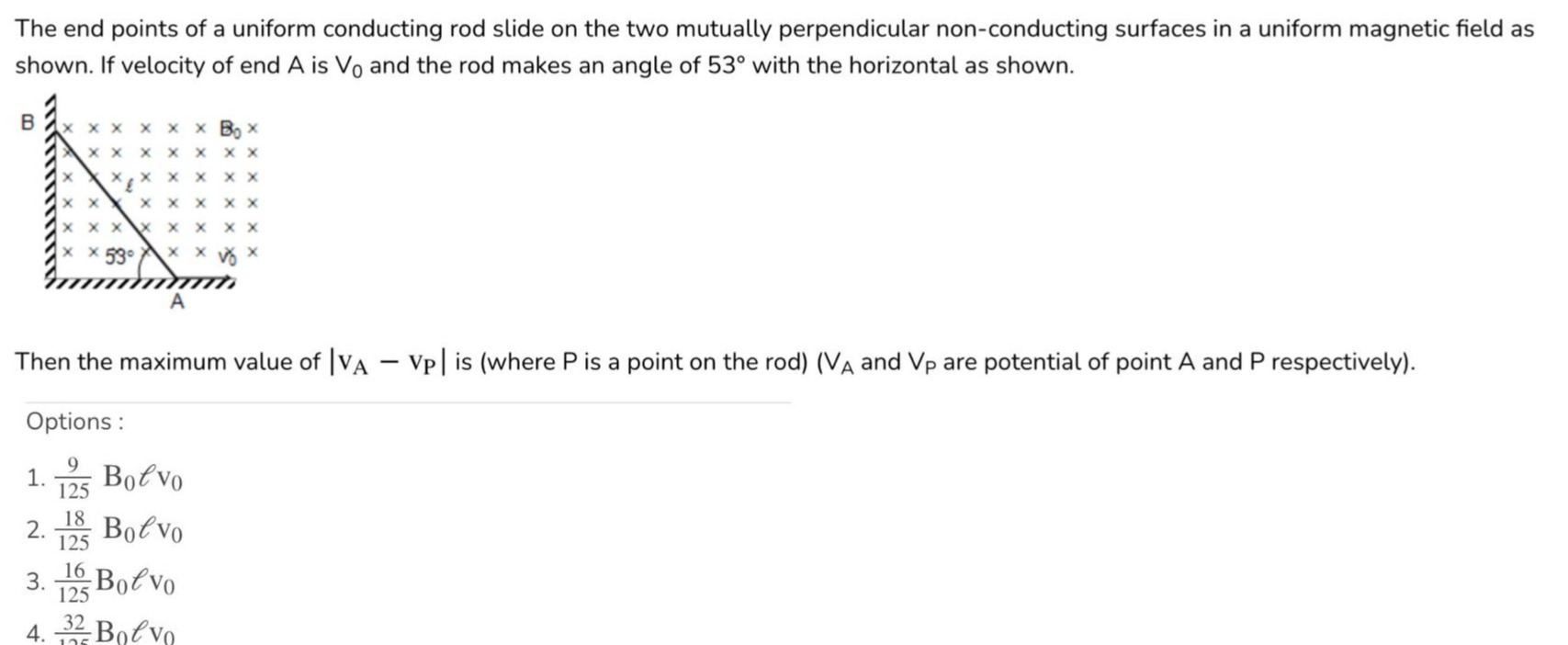Question
Question: The end points of a uniform conducting rod slide on the two mutually perpendicular non-conducting su...
The end points of a uniform conducting rod slide on the two mutually perpendicular non-conducting surfaces in a uniform magnetic field as shown. If velocity of end A is V0 and the rod makes an angle of 53∘ with the horizontal as shown.
Then the maximum value of ∣VA−VP∣ is (where P is a point on the rod) (VA and VP are potential of point A and P respectively).

1259B0ℓv0
12518B0ℓv0
12516B0ℓv0
12532B0ℓv0
12532B0ℓv0
Solution
To find the maximum value of ∣VA−VP∣, where P is a point on the rod, we analyze the potential difference between points A and P. The rod slides on two mutually perpendicular non-conducting surfaces in a uniform magnetic field B0. The velocity of end A is V0 horizontally, and the rod makes an angle of 53∘ with the horizontal.
Let the corner be the origin (0,0). A is at (xA,0), B is at (0,yB). The length of the rod is ℓ. The angle with the horizontal is 53∘. The instantaneous center of rotation (ICR) is at (xA,yB).
The potential difference VA−VP is given by: VA−VP=−B0V0(2ℓsinθs2−ssinθ)
where s is the distance from A to P.
To find the maximum value of ∣VA−VP∣, we analyze the function h(s)=2ℓsinθs2−ssinθ.
The minimum of h(s) occurs at s=ℓsin2θ=ℓ(4/5)2=2516ℓ.
The minimum value is h(2516ℓ)=−12532ℓ.
The values of VA−VP are: At s=0 (point P is A): VA−VA=0. At s=ℓ (point P is B): VA−VB=−B0V0ℓ(2sinθ1−sinθ)=407B0V0ℓ. At s=2516ℓ (the minimum of h(s)): VA−VP=12532B0V0ℓ.
We need the maximum value of ∣VA−VP∣. Comparing the absolute values of these results, we find that the maximum absolute value is 12532B0V0ℓ.
